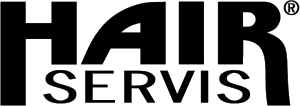Cost Control: Techniques & Importance
Our customers can issue an unlimited number of smart, virtual corporate cards to Accounting for Marketing Agencies individual departments or employees. Each card can be set with custom spend limits and monitored with real-time budget controls. All spend data from across your company is compiled digitally, including digital receipts, which drastically reduces the amount of time your team needs to spend on reporting. These cost control examples illustrate that managing costs requires detailed planning, regular monitoring, clear communication, and a willingness to adapt as needed. By embedding these practices into their project management processes, companies can improve their financial performance and deliver more value to their clients.

How does Happay help in cost control management?
Technology has made it possible to automate the entire process, from budgeting and tracking expenses to forecasting potential costs and analyzing data. Automating cost control processes helps project managers stay on top of their budgets in real-time, enabling them to make decisions quickly and efficiently. Tracking actual expenses against the budget in real time allows project managers to identify variances early. This involves using cost management tools, spreadsheets, or software to monitor expenditures and ensure they align with planned financial goals. Cost control is a critical aspect of financial management that enables organizations to optimize resources, enhance profitability, and maintain competitive advantage. By adopting effective strategies and principles, businesses can mitigate financial risks, improve operational efficiency, and achieve sustainable growth.
Manufacturing field

The transportation and logistics sector grapples with optimizing operations while containing logistics costs as there are many uncertain and uncontrollable factors that can go wrong. Reducing costs in the healthcare industry is tricky as one wants to compromise on the quality of service they provide. But at the same time, they also need to make sure that costs do not exceed a certain limit.
Importance of Cost Control in Project Management
There’s also the option of implementing a zero-based budget which allows merchants to examine each expense to evaluate if it’s justified or unnecessary for the overall success of the project. For CARES Act an effective system of cost control, the firm should have a definite plan of organisation. Likewise, you can drill deeper into those costs and identify subcategories—mileage, airfare, lodging, food, and entertainment—for a more granular understanding of where you’re spending the most money. Budgetary control facilitates organizational efficiency by promoting fiscal discipline and strategic resource allocation, which are crucial for achieving financial objectives. Effective cost control not only contributes to financial efficiency but also supports environmental sustainability by minimizing waste.

- Regular expense audits help identify wasteful spending and areas for optimization.
- Also known as overhead costs, they include expenses that support business operations.
- Automating cost control processes helps project managers stay on top of their budgets in real-time, enabling them to make decisions quickly and efficiently.
- Examples of indirect costs include rent, utilities, and administrative expenses.
- In the pursuit of operational efficiency and fiscal prudence, businesses employ various techniques to monitor, assess, and regulate business expenses.
- Then compare this number to revenue expectations to ensure you’ll be profitable.
Exploring deeper into the realm of cost control, let’s reflect on how businesses use data analytics cost control as a powerful tool for controlling costs. Data analytics provides extensive insights into spending patterns, enabling businesses to predict future expenses accurately. Advanced analytical techniques, such as predictive modeling, aid in preemptive cost management, allowing for adjustments before deviations occur. This involves using algorithms that analyze historical cost data to forecast upcoming trends and variances. For instance, analyzing seasonal sales data might reveal opportunities to adjust staffing levels without compromising service quality, thus managing labor costs effectively. In conclusion, technology plays a crucial role in cost control by automating processes, reducing manual labor, and providing real-time data.

